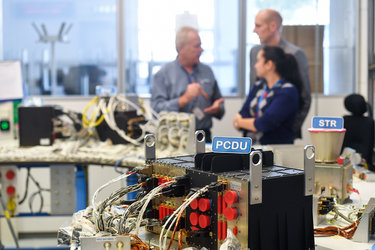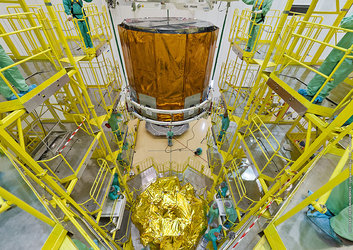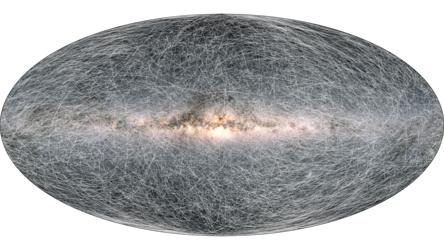Accept all cookies Accept only essential cookies See our Cookie Notice

About ESA
The European Space Agency (ESA) is Europe’s gateway to space. Its mission is to shape the development of Europe’s space capability and ensure that investment in space continues to deliver benefits to the citizens of Europe and the world.
Highlights
ESA - United space in Europe
This is ESA ESA facts Member States & Cooperating States Funding Director General Top management For Member State Delegations European vision European Space Policy ESA & EU Space Councils Responsibility & Sustainability Annual Report Calendar of meetings Corporate newsEstablishments & sites
ESA Headquarters ESA ESTEC ESA ESOC ESA ESRIN ESA EAC ESA ESAC Europe's Spaceport ESA ESEC ESA ECSAT Brussels Office Washington OfficeWorking with ESA
Business with ESA ESA Commercialisation Gateway Law at ESA Careers Cyber resilience at ESA IT at ESA Newsroom Partnerships Merchandising Licence Education Open Space Innovation Platform Integrity and Reporting Administrative Tribunal Health and SafetyMore about ESA
History ESA Historical Archives Exhibitions Publications Art & Culture ESA Merchandise Kids Diversity ESA Brand Centre ESA ChampionsLatest
Space in Member States
Find out more about space activities in our 23 Member States, and understand how ESA works together with their national agencies, institutions and organisations.
Science & Exploration
Exploring our Solar System and unlocking the secrets of the Universe
Go to topicAstronauts
Missions
Juice Euclid Webb Solar Orbiter BepiColombo Gaia ExoMars Cheops Exoplanet missions More missionsActivities
International Space Station Orion service module Gateway Concordia Caves & Pangaea BenefitsLatest
Space Safety
Protecting life and infrastructure on Earth and in orbit
Go to topicAsteroids
Asteroids and Planetary Defence Asteroid danger explained Flyeye telescope: asteroid detection Hera mission: asteroid deflection Near-Earth Object Coordination CentreSpace junk
About space debris Space debris by the numbers Space Environment Report In space refuelling, refurbishing and removingSafety from space
Clean Space ecodesign Zero Debris Technologies Space for Earth Supporting Sustainable DevelopmentLatest
Applications
Using space to benefit citizens and meet future challenges on Earth
Go to topicObserving the Earth
Observing the Earth Future EO Copernicus Meteorology Space for our climate Satellite missionsCommercialisation
ESA Commercialisation Gateway Open Space Innovation Platform Business Incubation ESA Space SolutionsLatest
Enabling & Support
Making space accessible and developing the technologies for the future
Go to topicBuilding missions
Space Engineering and Technology Test centre Laboratories Concurrent Design Facility Preparing for the future Shaping the Future Discovery and Preparation Advanced Concepts TeamSpace transportation
Space Transportation Ariane Vega Space Rider Future space transportation Boost! Europe's Spaceport Launches from Europe's Spaceport from 2012
Surrounded by Gaia
Thank you for liking
You have already liked this page, you can only like it once!
A full-size working model of Gaia’s internal systems arrived in Germany this week. The Avionics Model is mounted in a circular set-up representing the systems on the actual satellite, now orbiting the Sun–Earth L2 point about 1 500 000 km from Earth.
With the model at ESA’s European Space Operations Centre, ESOC, in Darmstadt, Germany, the ESA flight control specialists responsible for Gaia now have access to a fully functional test bench of the inner workings of the billion-star surveyor.
The model will remain at ESOC for the rest of the mission, with the team trained to use and maintain it with the support of Airbus Defence and Space, Toulouse, the prime contractor during Gaia’s development.
The model was a whopping 4x4 m at its base, and could only be moved at night owing to its size.
Gaia is on a mission to make the largest, most precise 3D map of our Galaxy by surveying more than a thousand million stars.
Gaia will monitor each of its target stars about 70 times over a five-year period. It will precisely chart their positions, distances, movements and changes in brightness. It is expected to discover hundreds of thousands of new celestial objects, such as extrasolar planets and brown dwarfs, and observe hundreds of thousands of asteroids within our own Solar System.
The mission will also study some 500 000 distant quasars and will provide stringent new tests of Albert Einstein’s General Theory of Relativity.
In the image (L-R): Sonia Perez (AirbusD&S), Andreas Rudolph, Kevin Kewin, Guillermo Lorenzo. More images via Flickr.
-
CREDIT
ESA/L. Guilpain - CC BY-SA IGO 3.0 -
LICENCE
ESA Standard Licence

Gaia avionics model

The Gaia star-mapper is lowered into position atop t…

Gaia’s stellar motion for the next 400 thousand years

Gaia: ESA's billion star surveyor - launch event at ESOC















 Germany
Germany
 Austria
Austria
 Belgium
Belgium
 Denmark
Denmark
 Spain
Spain
 Estonia
Estonia
 Finland
Finland
 France
France
 Greece
Greece
 Hungary
Hungary
 Ireland
Ireland
 Italy
Italy
 Luxembourg
Luxembourg
 Norway
Norway
 The Netherlands
The Netherlands
 Poland
Poland
 Portugal
Portugal
 Czechia
Czechia
 Romania
Romania
 United Kingdom
United Kingdom
 Slovenia
Slovenia
 Sweden
Sweden
 Switzerland
Switzerland

























